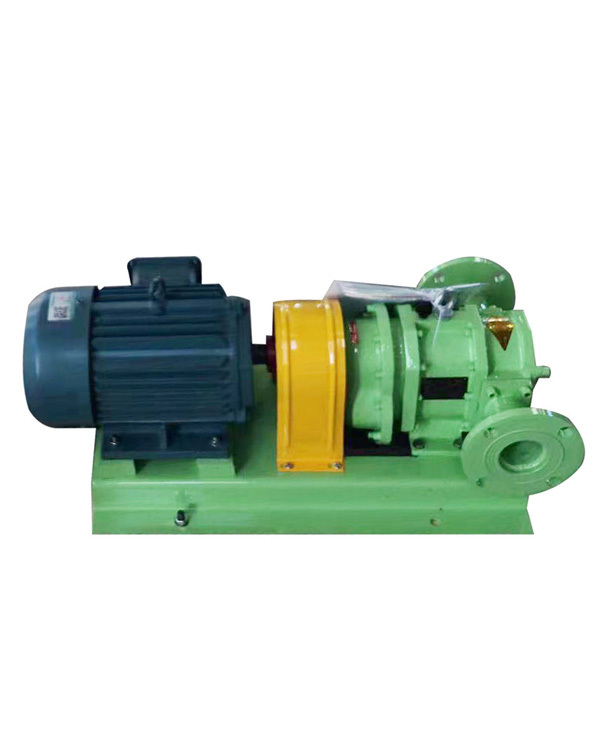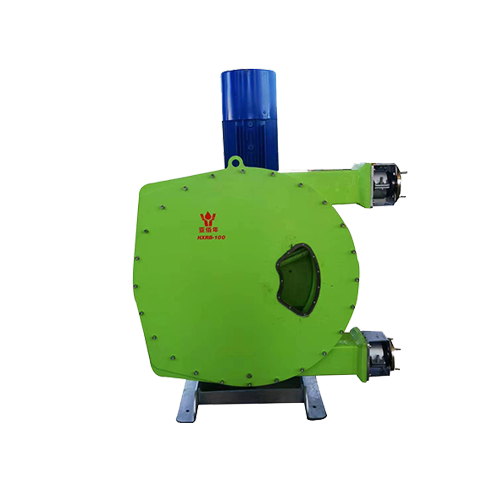Enhancing Wastewater Treatment with Rubber Lobe Pumps: A Comprehensive Guide
Mar 08,2025

Enhancing Wastewater Treatment with Rubber Lobe Pumps: A Comprehensive Guide
Table of Contents
1. Introduction to Wastewater Treatment
2. Understanding Rubber Lobe Pumps
3. Benefits of Rubber Lobe Pumps in Wastewater Treatment
3.1 High Efficiency and Performance
3.2 Gentle Handling of Fluids
3.3 Versatility in Applications
3.4 Reduced Maintenance Requirements
3.5 Cost-Effectiveness
4. Applications of Rubber Lobe Pumps in Wastewater Treatment
4.1 Sludge Transfer
4.2 Chemical Dosing
4.3 Biogas Utilization
5. Selecting the Right Rubber Lobe Pump
5.1 Key Considerations
5.2 Sizing and Specifications
6. Installation and Operation Best Practices
7. Troubleshooting Common Issues with Rubber Lobe Pumps
8. Conclusion
9. FAQs
1. Introduction to Wastewater Treatment
Wastewater treatment plays a pivotal role in maintaining environmental health and ensuring public safety. As populations grow and industries expand, the demand for effective wastewater management systems increases. The processes involved in wastewater treatment are complex and require efficient equipment to handle the varying characteristics of waste. Among these, rubber lobe pumps stand out as a reliable solution for enhancing wastewater treatment efficiency.
2. Understanding Rubber Lobe Pumps
Rubber lobe pumps are positive displacement pumps designed to handle a wide variety of fluids, including slurries, viscous liquids, and even shear-sensitive materials. These pumps operate using two or more lobes that rotate within a pumping chamber, creating pockets that trap and move the fluid. The use of rubber as a material for the lobes ensures durability, flexibility, and resistance to wear, making them ideal for demanding environments like wastewater treatment.
3. Benefits of Rubber Lobe Pumps in Wastewater Treatment
3.1 High Efficiency and Performance
Rubber lobe pumps provide exceptional efficiency, ensuring that they can move large volumes of wastewater with minimal energy consumption. This efficiency translates into lower operational costs and reduced environmental impact.
3.2 Gentle Handling of Fluids
One of the key advantages of rubber lobe pumps is their gentle handling of fluids. The design allows for the movement of sludge and other materials without causing significant shear, which is crucial in preserving the integrity of the fluid and the microorganisms within.
3.3 Versatility in Applications
These pumps are highly versatile, making them suitable for various applications within wastewater treatment facilities. From transferring sludge to dosing chemicals, rubber lobe pumps can adapt to the specific needs of different processes.
3.4 Reduced Maintenance Requirements
The simplicity of rubber lobe pump design contributes to lower maintenance requirements. With fewer moving parts and robust construction, these pumps can operate for extended periods with minimal downtime. This reliability is crucial in wastewater treatment, where pump failure can lead to significant operational disruptions.
3.5 Cost-Effectiveness
Investing in rubber lobe pumps can lead to substantial cost savings over time. Their efficiency, reduced maintenance needs, and longevity contribute to a favorable return on investment, making them an attractive option for wastewater treatment facilities.
4. Applications of Rubber Lobe Pumps in Wastewater Treatment
4.1 Sludge Transfer
One of the primary applications of rubber lobe pumps in wastewater treatment is sludge transfer. These pumps can efficiently move thick, viscous sludge from one location to another, ensuring that it is handled safely and effectively.
4.2 Chemical Dosing
Rubber lobe pumps are frequently used for chemical dosing in wastewater treatment processes. Their precise flow control allows operators to accurately administer the necessary chemicals, ensuring optimal treatment outcomes.
4.3 Biogas Utilization
In anaerobic digesters, where biogas is produced from organic waste, rubber lobe pumps are utilized to transfer the digestate and biogas. Their ability to handle varying viscosities makes them suitable for this application, contributing to efficient energy recovery.
5. Selecting the Right Rubber Lobe Pump
5.1 Key Considerations
When selecting a rubber lobe pump for wastewater treatment, it's essential to consider factors such as flow rate, viscosity of the fluid, and operating pressure. Understanding these parameters helps ensure that the pump meets the specific needs of the application.
5.2 Sizing and Specifications
Proper sizing of the pump is critical. Oversized pumps can lead to inefficiencies and increased wear, while undersized pumps may struggle to handle the required flow rates. Reviewing specifications and consulting with manufacturers can aid in selecting the appropriate pump size.
6. Installation and Operation Best Practices
To maximize the performance of rubber lobe pumps, adherence to installation and operation best practices is essential. Proper alignment and securing of the pump can prevent operational issues. Regular monitoring of performance metrics will help identify potential problems before they escalate.
7. Troubleshooting Common Issues with Rubber Lobe Pumps
Despite their reliability, rubber lobe pumps may encounter some common issues. These can include reduced flow rates, excessive noise, or leaks. Understanding how to troubleshoot these problems can minimize downtime and maintain operational efficiency. Regular maintenance checks and monitoring will help catch these issues early.
8. Conclusion
Rubber lobe pumps are a transformative technology in the realm of wastewater treatment. Their efficiency, versatility, and low maintenance requirements make them an ideal choice for a variety of applications within this field. By investing in rubber lobe pumps, wastewater treatment facilities can enhance their processes, reduce costs, and contribute to environmental sustainability.
9. FAQs
What are rubber lobe pumps used for in wastewater treatment?
Rubber lobe pumps are primarily used for transferring sludge, chemical dosing, and biogas utilization in wastewater treatment facilities.
How do rubber lobe pumps compare to other types of pumps?
Rubber lobe pumps offer higher efficiency and better handling of viscous fluids compared to centrifugal pumps, making them more suitable for certain wastewater applications.
What maintenance do rubber lobe pumps require?
Rubber lobe pumps require minimal maintenance, but regular checks for wear on the lobes and ensuring proper alignment are essential for optimal performance.
Can rubber lobe pumps handle abrasive materials?
While rubber lobe pumps can handle a variety of fluids, their effectiveness with abrasive materials depends on the specific pump design. It’s important to consult manufacturers for guidance.
Are rubber lobe pumps suitable for high-viscosity fluids?
Yes, rubber lobe pumps are well-suited for high-viscosity fluids due to their positive displacement design, which allows for effective movement of thick materials.
PREVIOUS:
Contact Us
E-mail :
sales@yaquanpump.com
service@yaquanpump.com
Phone/WhatsApp:
+44 7301702546
+63 9452052801
Address:
Room B208, Building 2, North Hongqiao Songri Center, No.215 Gaochao Road, Jiading District, Shanghai









